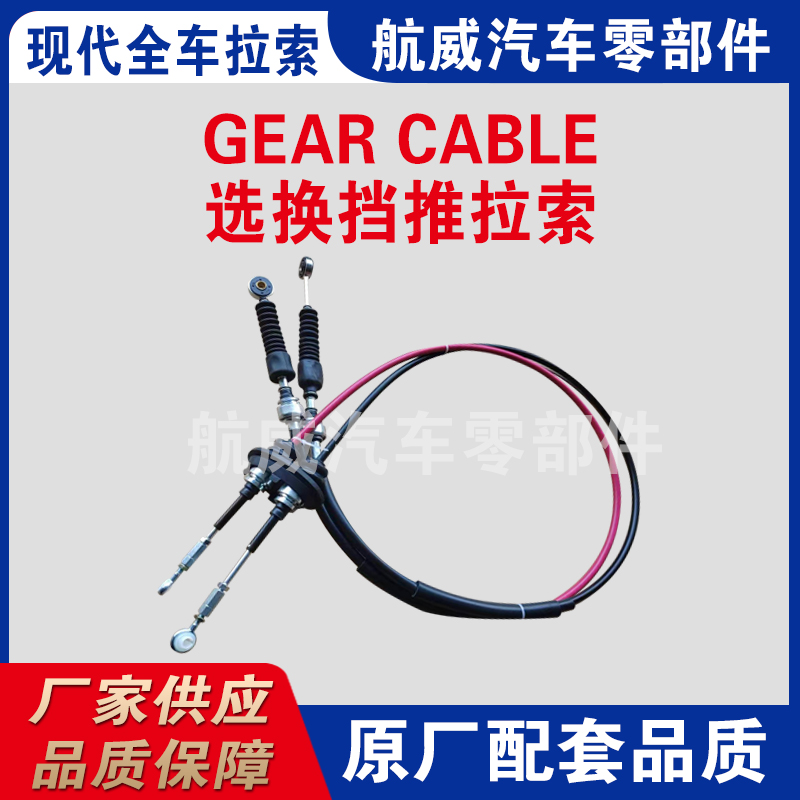High-Performance Gear Cables for Smooth Car Transmission Upgrades and Enhancements
Understanding Car Gear Cables The Unsung Heroes of Transmission Systems
When we think about the functioning of a car, we often focus on the engine, wheels, and braking systems. However, one of the critical components that play a pivotal role in the overall performance of a vehicle but rarely gets the limelight is the gear cable. Gear cables are essential for the smooth operation of manual transmission vehicles, allowing drivers to engage and disengage gears seamlessly. Let us delve into the intricacies of car gear cables and their importance in automotive engineering.
What Are Gear Cables?
Gear cables are a type of flexible steel cable that connects the gear lever inside the vehicle to the transmission system. Their primary function is to transmit the driver’s input from the gear shift to the transmission, allowing for smooth gear changes. Typically, vehicles are equipped with either a manual or an automatic transmission system. While automatic transmissions have their complexities, gear cables are predominantly found in manual transmission vehicles.
The Anatomy of Gear Cables
A typical gear cable consists of an inner core and an outer casing. The inner core is made from high-tensile steel, designed to withstand significant tension while maintaining flexibility. The outer casing, usually made from durable plastic or steel, protects the inner cable from environmental factors and ensures smooth operation. The ends of gear cables are fitted with connectors that attach to both the gear lever and the transmission, allowing for efficient signal transmission.
Importance of Gear Cables
1. Precision in Gear Shifting Gear cables enable precise gear selection, which is crucial for the performance and handling of the vehicle. A malfunctioning cable can lead to difficulties in shifting gears, potentially causing accidents or breakdowns.
2. Durability and Reliability Quality gear cables are designed to last. They are subjected to extreme conditions, including heat, cold, and vibrations. A well-maintained gear cable ensures that the vehicle operates reliably, providing peace of mind for drivers.
car gear cable

3. Cost-Effective Maintenance Replacing a worn or damaged gear cable is generally more affordable than extensive repairs to the transmission system. Regular inspections and timely replacements can prevent significant issues, making gear cables an essential part of vehicle maintenance.
Signs of Gear Cable Issues
Like any mechanical component, gear cables can wear out over time. Awareness of the signs of failure can help drivers address issues before they escalate. Common indicators include
- Difficulty Shifting Gears If the gear lever feels sticky or requires excessive force to move, it might indicate a failing cable. - Unusual Noises Grinding or clunking sounds during gear shifts can suggest that the gear cable is misaligned or damaged. - Gear Slipping If the vehicle unexpectedly slips from one gear to another, the gear cable may not be transmitting the signals correctly.
Maintenance Tips
To extend the lifespan of gear cables and ensure their smooth operation, consider the following maintenance tips
- Regular Inspections Periodically check the condition of the cables for any signs of fraying or wear. - Lubrication Applying a suitable lubricant to the cables can reduce friction, allowing for easier gear changes. - Professional Service Seek professional help if you notice any issues. A qualified mechanic can diagnose problems early and recommend the necessary repairs or replacements.
Conclusion
In conclusion, car gear cables are a vital component of a vehicle’s transmission system, affecting the performance and safety of manual transmission cars. By understanding their functions, maintenance requirements, and signs of possible issues, drivers can ensure that their gear shifting remains smooth and reliable. Recognizing the importance of these unsung heroes can lead to better vehicle performance and, ultimately, a smoother driving experience. So, the next time you shift gears, take a moment to appreciate the role that gear cables play in making that effortless transition possible.
-
Workings of Clutch Pipe and Hose SystemsNewsJun.04,2025
-
The Inner Workings of Hand Brake Cable SystemsNewsJun.04,2025
-
The Secrets of Throttle and Accelerator CablesNewsJun.04,2025
-
The Hidden Lifeline of Your Transmission Gear Shift CablesNewsJun.04,2025
-
Demystifying Gear Cables and Shift LinkagesNewsJun.04,2025
-
Decoding Clutch Line Systems A Comprehensive GuideNewsJun.04,2025
